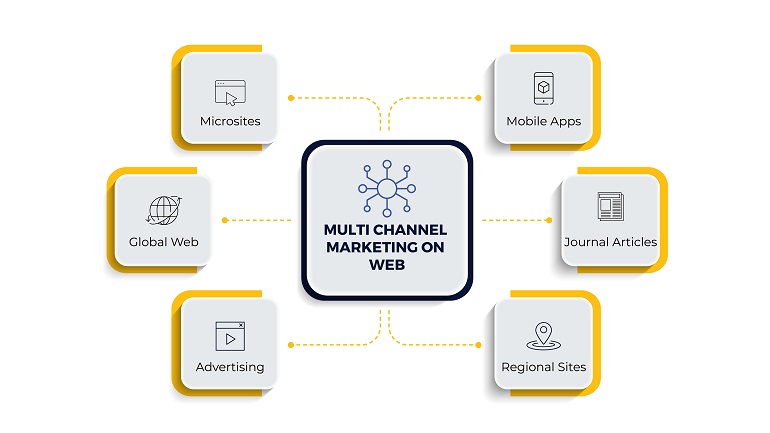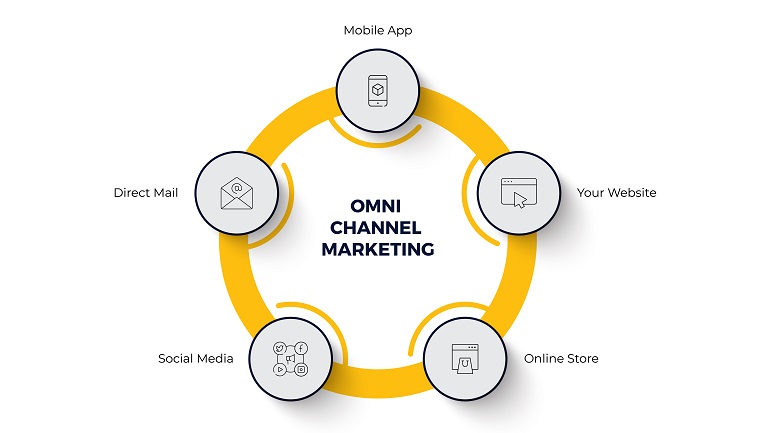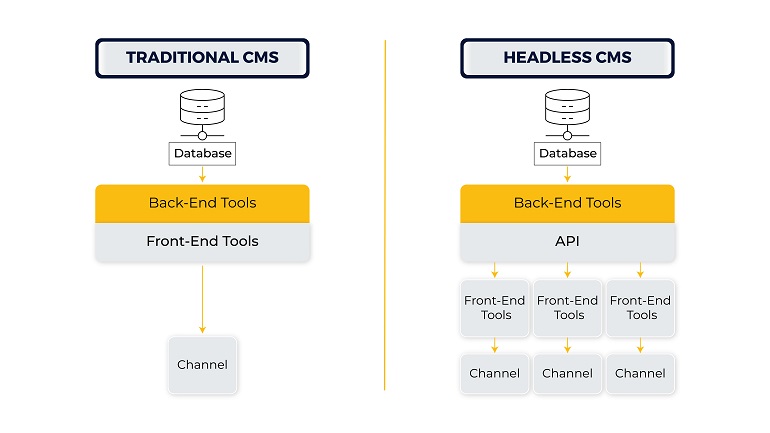
One cannot overemphasize the importance of a proper marketing strategy in making a product successful. Even the best of products fail without a robust digital marketing strategy. In the modern age, marketing channels play a pivotal role in increasing customer outreach. Therefore, adopting modern marketing channels is essential for staying connected with the right audience.
This article explains two popular approaches used to create comprehensive digital marketing strategy. It also sheds light on the differences between the two approaches. Moreover, it explains how using a headless CMS makes it easier for you to pursue either of the marketing strategies optimally.
While there are many techniques used to set up web marketing channels, the following two are more effective and popular.
- Multichannel marketing
- Omnichannel marketing
What is Multi Channel Marketing?
A multi marketing channels strategy helps to increase the outreach and delivery of appropriate content to the relevant audience. Sometimes it becomes a little challenging to manage multiple marketing channels and ensure we have content correctness and integrity across all channels.
Using a separate content management system for each channel is not only tiresome but also error-prone. The solution lies in using a headless CMS.
Using a headless CMS allows you to store content in one place, thus making content management and publishing much more convenient for you. It lets you push content for all the different digital marketing channels like social media, email, and SMS via an SMS API, making distribution seamless from one platform.

We will explain in more detail what a headless CMS is later in this article.
What is Omni Channel Marketing?
An omnichannel marketing strategy helps to improve customer engagement as all channels are connected. It offers a seamless and comprehensive ecommerce experience within and between different channels. Users pick a channel on the channel’s availability or as per their convenience to continue engagement.
Companies employ omnichannel marketing as an online sales strategy to sell products using mobile, desktop, and in-person channels. Omni marketing channels serve and manage the same content repository. Furthermore, this marketing approach produces a comprehensive customer journey by blurring the distinctions between different channels (social, onsite, email, etc.)
A headless CMS makes it easy to set up omni marketing channels and manage content in one place.

But before we discuss what a headless CMS is and its advantages, it is better to highlight the difference between multi channel and omni channel digital marketing strategy.
What is the difference between Multi-Channel and Omni-Channel?
People often use the terms multichannel and omnichannel interchangeably. But that is incorrect. While both marketing approaches are similar, they are not the same.
A multichannel approach focuses on the product and sells it using many channels, but not all. On the other hand, omnichannel prioritizes the customer instead of the product and uses all, not many, channels to sell. The difference between the two is that all the channels are connected with each other in omnichannel, whereas in multichannel these channels are independent of each other.
Which approach is better for your company?
It depends on your business niche and your company’s core competencies. For example, the omnichannel approach is suitable for retail companies because it focuses on the customer. But you must have proper in-house IT resources to implement an omnichannel strategy. Also, it cannot be half-baked, and you will have to fully see it through if you want to reap its benefits.
But if you lack IT resources or the funds to outsource omni channel marketing, you can start with a multichannel approach. Once you are familiar with it and have the required resources, you can transition to an omni channel strategy.
Therefore, whichever strategy you choose, a headless CMS will be of great use to you.
Let’s explore what a headless CMS is and its various advantages.
What is a Headless CMS?
It is challenging to sync all the marketing channels and publish the latest content simultaneously. It becomes even more complicated when different content repositories or CMS are used for each marketing channel. Content inconsistency issues arise just because there are multiple points to manage the content.
The remedy to this problem lies in using a headless CMS. A headless content management system called a headless CMS is a back-end-only content management system. It is built from scratch as a content repository that allows access to content through a RESTful API for display on any device. The term “headless” refers to the concept of removing the front-end (head) from the back-end (body).
With this approach, the website’s front-end is separated from the back-end/CMS; this way, we can connect multiple web fronts with the same back-end/CMS. Every web front can have its own way of branding and representing content representation.

We can also use a different technology stack for web fronts development and consider other infrastructure options to develop enterprise-grade high performance web fronts. This gives us a lot of leverage to view the best options available for technology and infrastructure.
Benefits of Using Headless CMS:
Here is a brief list of benefits you can expect by employing a headless CMS to boost your digital marketing strategy;
- Enhanced omnichannel customer experience – Traditional content management systems were built keeping only web content in mind. But with the rapid technological change, these systems became obsolete. A headless CMS is decoupled and allows you to upload, edit, and manage content on a single platform without IT experts’ help. This flexibility will enable you to create engaging and interactive customer journeys that translate into higher customer satisfaction and retention.
- Low cost – A headless CMS also allows your team to build new functionalities quickly. If you want to launch a new product mini-site, your team does not require IT help to create it. Use the headless CMS to make it and cut down on your IT spending.
- Easy-to-use – One of the best benefits of a headless CMS is its ease of use. Anyone without technical skills can use a headless CMS to manage content. You can also store uncluttered content that users can easily access.
- Scalability – Since the front and back-ends are separate in a CMS, you can quickly fix maintenance issues without causing downtime to your website. You also have innumerable hosting and deployment options with a headless CMS.
- Easy to develop – A headless CMS is driven by APIs, which means that you can build your front-end end-to-end. You can also choose the programming language in a headless CMS. Moreover, it is easy to integrate a headless CMS with other existing systems.
More About headless CMS:
Here is an article that explains how two different, popular opensource CMS platforms – Orchard and WordPress – function as headless CMS. The article explains the problems of using a traditional CMS and how a headless CMS overcomes them. Moreover, it will offer you a step-by-step guide on how to use each platform as a headless CMS.
